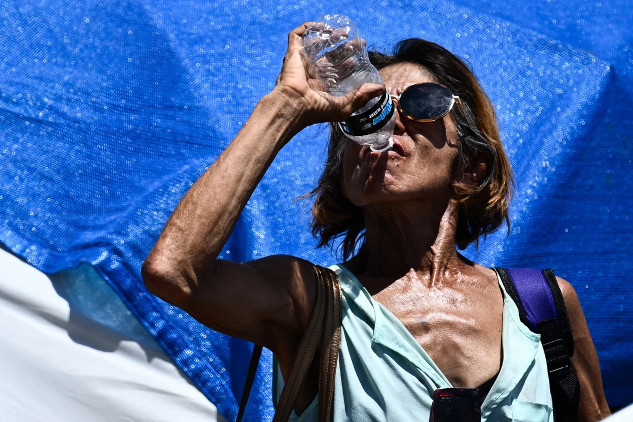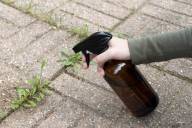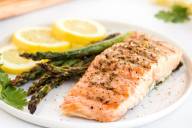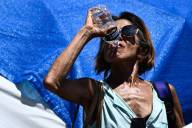
In this Article:
- How do high temperatures affect human survival and daily life?
- Why is the traditional 35°C wet-bulb model outdated?
- What factors make some people more vulnerable in extreme heat?
- How can we adapt to make our lives safe and sustainable in a warmer climate?
- What are immediate and long-term strategies for heat resilience?
Human Survival in Extreme Heat: New Research
by Robert Jennings, InnerSelf.com
Human survival in extreme heat is no longer hypothetical as global temperatures continue to rise. Across the world, people are feeling the effects of hotter, more humid conditions. This isn't just about surviving the hottest days; it's about understanding how to live healthy, active lives in this new reality. Researchers are now diving deeper into how our bodies respond to heat and uncovering how age, humidity, and exposure to sunlight affect our limits. The findings offer new insights that may guide us in preparing for a warmer world.
Beyond Traditional Heat Models
The wet-bulb temperature model has been the gold standard for assessing human survival in extreme heat for decades. This model, which caps survivability at a wet-bulb temperature of 35°C (or about 95°F), assumes that humans cannot survive in hotter, humid environments for more than six hours. However, this model doesn't account for the complexities of human physiology, nor does it consider variations in age, humidity levels, or sun exposure. Essentially, it oversimplifies a very complex picture.
New studies suggest that survivability limits vary widely based on age, humidity, and shade. For instance, physiological differences between young and older adults, such as the body's ability to cool itself through sweat, mean that the elderly are often at a significantly higher risk. By refining our models to include these variations, we gain a better understanding of not just where but how people can survive—and ideally thrive—in increasingly extreme conditions.
Rethinking Survivability
The body's response to heat is highly individualized. Younger adults' sweat glands are typically more active, and their cardiovascular system is more resilient, allowing them to tolerate higher temperatures for longer. Older adults, however, have a reduced sweat response, and their cardiovascular systems are often less efficient. As a result, they are more vulnerable to heat-related illnesses, such as heat exhaustion and heat stroke, even at lower temperatures than younger individuals might find tolerable.
Researchers now propose updated "survivability curves" that show how long different age groups can endure specific temperature and humidity combinations. For example, younger adults may survive at wet-bulb temperatures of up to 34°C in shaded, humid conditions. Compared, older adults might only endure up to 27°C in similar situations. This variation becomes even more pronounced in dry, sunny environments, where the body's ability to cool itself through sweat evaporation is restricted. These distinctions are crucial as they reveal that survivability is far from a one-size-fits-all scenario.
Not Just Surviving but Thriving
Surviving a heatwave is one thing, but living in extreme heat is a different challenge. Here, scientists introduce the concept of "liveability" – the maximum amount of physical activity a person can perform safely in hot conditions. This concept is essential as it goes beyond mere survival, looking at the daily activities people can perform without putting themselves at risk of heat stroke or exhaustion.
In shaded, drier conditions at around 25°C, young adults can safely engage in moderate activities like gardening or housework. However, their activity level must be reduced under more humid or sunny conditions to avoid overheating. For older adults, the capacity for physical activity is much lower. At similar temperatures, they may only be able to engage in light tasks like walking or sitting outside. Liveability isn't just a matter of staying alive – it's about the quality of life and the ability to engage in regular daily activities.
Implications of Declining Liveability
The implications of declining liveability are particularly concerning for heavily populated and already hot regions. Areas in South Asia, the Arabian Peninsula, and parts of the southeastern United States are expected to face the highest rates of reduction in liveability as temperatures continue to rise. In some cases, once livable regions may shift to survivable only, where even routine physical activities may become unsafe during certain parts of the day.
Looking to the future, researchers project a significant decline in the safe activity levels, or "metabolic equivalents," that people can sustain in these regions. By the end of this century, people in the most affected areas may experience a nearly 30% reduction in safe physical activity levels. This change is more than an inconvenience; it may affect productivity, economic stability, and overall well-being, reducing agricultural output, higher healthcare demands, and increasing heat-related illnesses.
Adaptation and Resilience
We are better equipped to consider adaptation strategies with these new insights into how age, climate, and physiology impact survivability and liveability. Individuals, communities, and policymakers can take steps to mitigate these risks and improve the quality of life for those affected by extreme heat.
For the individual, adaptation might include reducing physical activity during peak heat hours, seeking shade, and staying hydrated. On a community level, access to cooling centers, shaded public spaces, and awareness campaigns can significantly reduce heat-related risks. These immediate actions, although simple, can make a substantial difference, especially during heat waves.
Long-term adaptation is more complex and requires urban planning, infrastructure, and policy changes. Cities can introduce more green spaces and invest in heat-resistant materials for public spaces to help reduce the overall urban heat island effect. Policy changes, such as mandatory cooling facilities in residential and commercial buildings or financial support for vulnerable communities, are essential as more regions experience increasingly high temperatures. Adapting housing standards to include better insulation, air conditioning, and ventilation could significantly improve liveability.
While new models and studies provide a clearer picture of human survivability in extreme heat, it is essential to take these insights seriously. Our ability to thrive in a warmer world will depend on how prepared we are to address these challenges head-on. It's not just about surviving the next heatwave; it's about building resilient communities that can withstand the stresses of climate change. Through proactive measures, thoughtful policy, and a commitment to resilience, we can navigate the warming world with compassion and preparedness. Now is the time to take action and ensure that future generations have a livable, sustainable world to thrive.
Article Recap
As climate change drives up global temperatures, "human survival in extreme heat" and "liveability in high temperatures" are urgent concerns. This article examines how age, sunlight, humidity, and climate impact human limits and provides strategies for maintaining liveability. Discover adaptive measures and long-term solutions to help us thrive in hotter conditions.
About the Author
 Robert Jennings is co-publisher of InnerSelf.com with his wife Marie T Russell. He attended the University of Florida, Southern Technical Institute, and the University of Central Florida with studies in real estate, urban development, finance, architectural engineering, and elementary education. He was a member of the US Marine Corps and The US Army having commanded a field artillery battery in Germany. He worked in real estate finance, construction and development for 25 years before starting InnerSelf.com in 1996.
Robert Jennings is co-publisher of InnerSelf.com with his wife Marie T Russell. He attended the University of Florida, Southern Technical Institute, and the University of Central Florida with studies in real estate, urban development, finance, architectural engineering, and elementary education. He was a member of the US Marine Corps and The US Army having commanded a field artillery battery in Germany. He worked in real estate finance, construction and development for 25 years before starting InnerSelf.com in 1996.
InnerSelf is dedicated to sharing information that allows people to make educated and insightful choices in their personal life, for the good of the commons, and for the well-being of the planet. InnerSelf Magazine is in its 30+year of publication in either print (1984-1995) or online as InnerSelf.com. Please support our work.
Creative Commons 4.0
This article is licensed under a Creative Commons Attribution-Share Alike 4.0 License. Attribute the author Robert Jennings, InnerSelf.com. Link back to the article This article originally appeared on InnerSelf.com
books_health













